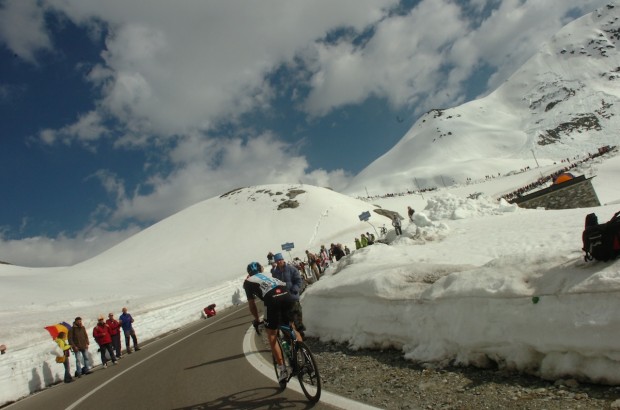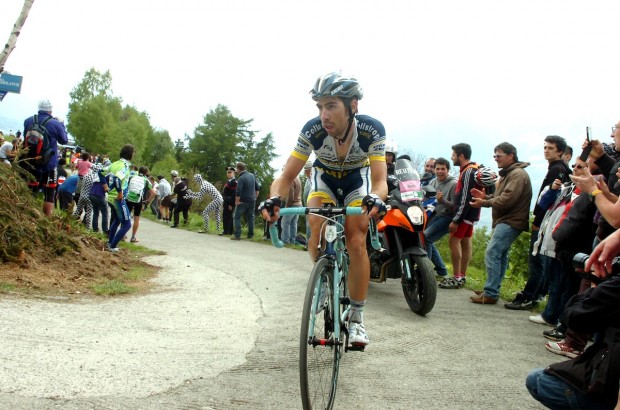In many sportives, both at home and abroad, it’s the climbs that are most likely to strike fear into an ill-prepared rider.
On the flats, you can hide in a group and save energy, but on a climb it’s every man or woman for themselves! You may not be able to climb like Chris Froome, but with the right training and preparation, climbs can be fun, rather than fear-inducing!
Good preparation is very important to know what you’re letting yourself in for. Ignoring the route profile can leave you poorly prepared for the challenges ahead, so make sure you have the right gears (do you need to fit a compact or triple chainset or a cassette with larger sprockets?) and know what’s coming up on the course. Don’t go all out for the first kilometre of the climb only to turn a corner and see it stretching on for much longer than it originally looked!

Power to weight ratio is the most important area of focus, both for short and long climbs. Simply put, the more power you can produce, and the less mass you have to move, the faster you will climb.
This is true for short steep climbs typical in UK events: those lasting from a few minutes (interval training will help increase power for climbs of this nature), up to maybe 20 or30 minutes in the tougher domestic challenges (a 10-mile time trial with your local club is a great way to test how hard you can really push yourself).
An optimised power to weight ratio will also increase your performance on the long, Alpine-style climbs typical of events like La Marmotte, which may last 90 minutes or more. This is where preparation comes in: know how long your goal event is likely to take, the length of the climbs it includes, and train accordingly.
For most of us, losing a little ballast will help climbing (less mass to move). This is not true for everyone, however, and dropping too much weight, too quickly can lead to a loss of muscle mass and potentially impair your power and performance: if in doubt, contact a coach to help assess your training.
The best strategy to lose unwanted fat is, of course, to exercise more and eat less. Targeting a calorie deficit of 500 to 1000kcal should slowly reduce your weight, primarily from fat stores, by 0.5-1kg in a week. This can be achieved by replacing a chocolate bar with a 30-minute ride. Implement the ‘easy’ fixes first by cutting out chocolate, alcohol, and fizzy drinks.
As you lose weight, your metabolic rate will come down, too. The body needs less energy to maintain a lower body mass, so the rate of weight loss is likely to decrease. Starting early and taking your time is the best way to lose weight sustainably while still ensuring you’re able to train hard.

The most important aspect of hill climbing is to train specifically for the climbs you will face in the event. For UK events, hill intervals on short climbs are ideal, pushing your capacity to suffer mentally as well as physically. Find a short climb, lasting from three to five minutes, and do several repetitions as hard as possible. Three to five repetitions is a good start, with long recoveries to ensure you are able to attack the climb with each repetition. As you improve, you can add more climbs and incorporate these into a longer ride for greater specificity.
Another approach, which helps to teach pacing over the whole climb, is to ride most of the climb slightly slower than you could, around 90 per cent of maximum effort. As you approach the top, sprint hard to maintain your effort as the climb flattens off and descends. If you live in a flat area, or are unable to get to suitable climbs, intervals of a similar duration on the turbo trainer are still useful. Keep in mind your body position as on the steep gradients you may have to ride out the saddle. Alternating intervals, doing one sat in the saddle in an upright climbing position and one out the saddle using the arms and torso, is a good approach to practice for these climbs.
Many of us are looking forward to foreign events such as La Marmotte or L’Etape du Tour this summer. The principle difficulty in the UK is finding climbs that are long enough to train on. Some may head abroad, to Mallorca or to the Alps, for example, for training camps where longer climbs allow you to replicate the demands of such events and to practice your pacing over a climb lasting anywhere between 40 and 90 minutes. Alternatively, for those of us who need to prepare in the UK, aim to replicate the effort and duration you will need to ride for on our flat or rolling roads.

Riding longer ‘intervals’ of between 20 and 60 minutes, a little below your maximum and repeating them will be good training for the longer climbs. Try to make these as specific as possible, so if you’re on the turbo trainer, prop up your front wheel and sit up on the hoods or the centre of the bars and push a big gear to replicate climbing. On the road, these efforts are great within a longer road ride. Look at the profile for your goal event and try to work up to a full-distance practice event, with periods of ‘climbing’ at a higher intensity, sat upright on the bike and in a bigger gear and easier periods to simulate the descents and flatter terrain.
While climbs can be daunting for the badly prepared, taking these steps to train and prepare your body and bike can make climbing much faster and more enjoyable. As with most things, starting early and aiming for good, consistent training and weight loss is the best approach, so with the weather finally getting improving, there’s never been a better time to get out there and ride those hills!





